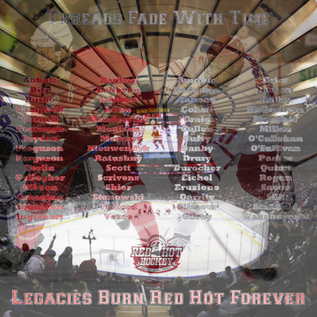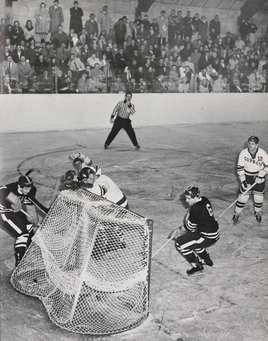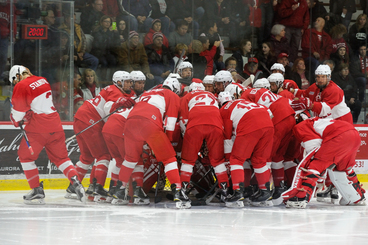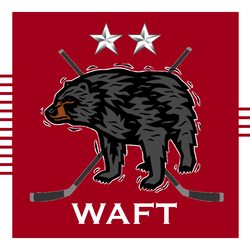Our goal is the same as the goal of the members of this team in choosing to wear the names of their great predecessors. We ask that fans and alumni, any members of the Lynah Faithful, don a sweater that commemorates former greats of the program for Red Hot Hockey V. The jersey can be from the era of the associated player or an improvised retro. The celebrated player can be from your own era as a student or any other era that resonates with you.
Cornell hockey is a shared experience. It nonetheless remains very personal. We like players individually as we like them as individuals. All that we ask is that you celebrate and represent the legacy of a player whose career or life resonates with you.
Are you someone who cannot help but wear that Dan Lodboa sweater? Do you miss the blistering slap shot of Pete Shier? Or, is the two-season captaincy of Colin Greening more your style? Does Joe Nieuwendyk's Whitelaw Cup resonate with you as much as do his three Stanley Cups? Did you find escape in hockey in another era and have a vintage Karl Habib jersey that just needs the dust shaken off? It does not matter the reason you celebrate. Just celebrate with us.
Join the celebration. How can you? During this week and while in New York for Red Hot Hockey, take pictures of others and you wearing your jerseys that celebrate greats of the Cornell hockey program. Share those photos using #tbthreads and #RHHrollcall with an explanation of why and for whom you wear that jersey.
Where Angels Fear to Tread and our partners in this event will take photos of fans whom we see wearing throwback sweaters and will share them using #tbthreads and #RHHrollcall on social media. Check those hashtags as anticipation builds this week. After this Saturday (and hopefully a Cornell win), Where Angels Fear to Tread will collect all the images, reasons, and stories shared in a piece about Red Hot Hockey as a celebration of what hockey means to the Cornell University community.
Don't forget to join in the celebration and let former players know that their fans remain Faithful.
Let's create a mosaic of the greatness of Cornell hockey bound together with a timeless carnelian and white thread.






 RSS Feed
RSS Feed
